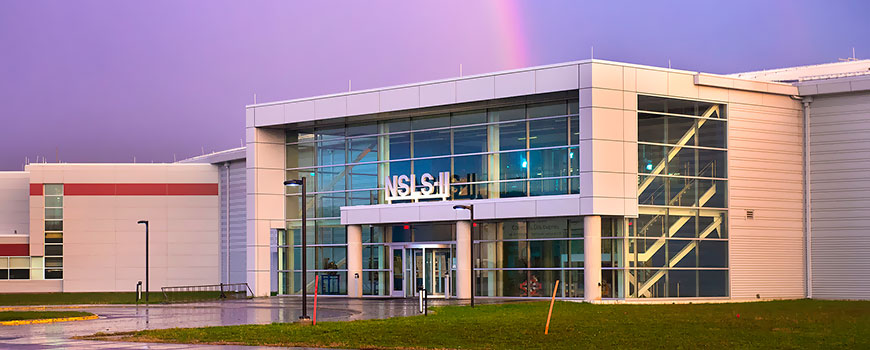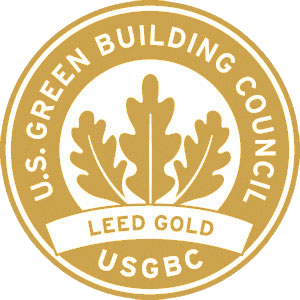Efficient Buildings

National Synchrotron Light Source II
The National Synchrotron Light Source II (NSLS-II) supports the scientific mission of the Department of Energy by providing the most advanced tools for discovery class science in condensed matter and materials physics, chemistry, and biology—science that ultimately will enhance national and energy security and help drive abundant, safe, and clean energy technologies. From the beginning, architects, engineers, construction managers, and contractors at Brookhaven Lab worked to implement sustainable design at NSLS-II.
NSLS-II is set on land that was previously disturbed — on the site of an old rail yard — which does less environmental damage than starting construction on previously undisturbed land. Much of the concrete and asphalt that remained on the site was recycled and formed the stone base for the parking lots around the ring building. In those lots, preferential parking is provided for energy-efficient vehicles. In anticipation of more widespread use of plug-in electric vehicles in the future, the design team provided an underground conduit from the building to the parking areas to enable future charging station installation.
Inside the building, sustainable materials added to the green design. Nearly all of the steel in the ring building is recycled and much of the concrete uses recycled fly ash.
In addition to considering the impact of the building, LEED certifications account for the impact on employees. Indoor air quality is improved by using materials for office spaces — particle board, carpeting — that don't give off noxious fumes, a process known as outgassing. The heating, ventilation, and air conditioning systems are designed for maximum economy, and a monitoring system throughout the building allows for adjustments to be made based on real-time feedback.
The design and engineering teams were also able to reduce the expected energy bills for the entire ring building. The teams worked with Brookhaven's Photon Sciences Accelerator Division to design a cooling system to operate at a slightly higher temperature than what is usually prescribed for accelerator facilities. This innovation saves 1.2 megawatts by enabling the use of a cooling tower for virtually all of the equipment cooling requirements, instead of using mechanical refrigeration.

We want to do the right thing environmentally by incorporating sustainable design features and we work to balance that with the need to maximize the facility's science capability



